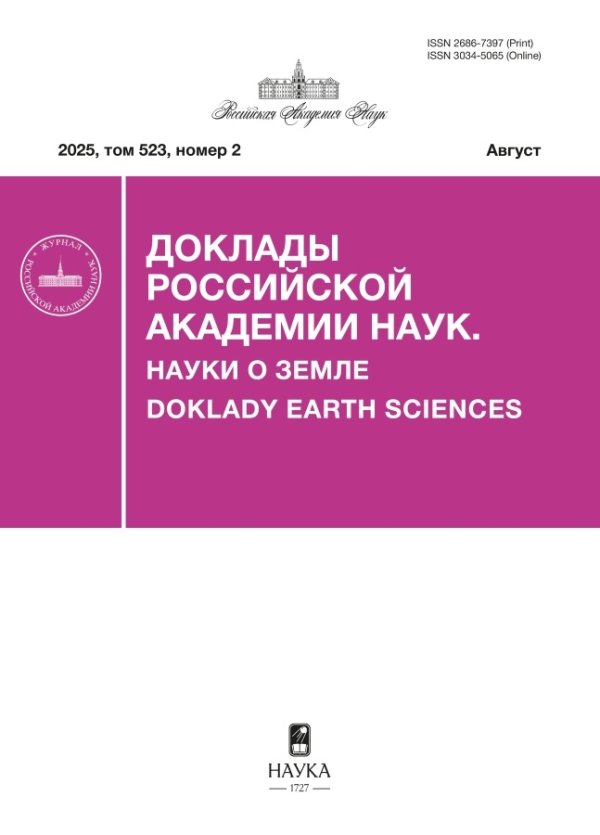Анализ представлений о повышении водоустойчивости почв
- Авторы: Федотов Г.Н.1, Шоба С.А.1, Горепекин И.В.1, Тарасенко Д.А.1
-
Учреждения:
- Московский государственный университет им. М.В. Ломоносова
- Выпуск: Том 519, № 2 (2024)
- Страницы: 141-147
- Раздел: ПОЧВОВЕДЕНИЕ
- Статья получена: 04.06.2025
- Статья опубликована: 28.12.2024
- URL: https://vestnik.nvsu.ru/2686-7397/article/view/682460
- DOI: https://doi.org/10.31857/S2686739724120187
- ID: 682460
Цитировать
Полный текст
Аннотация
Одним из приемов повышения водоустойчивости и эрозионной стойкости почв является использование полимеров-структоров. Считается, что механизм их действия основан на укреплении связей между частицами глинистых минералов. Такой подход игнорирует существование на поверхности минеральных частиц органоминеральных гелей, которые могут оказывать влияние на эффективность действия полимеров. Цель работы состояла в исследовании взаимодействия ряда веществ-структоров, используемых для повышения водоустойчивости и эрозионной стойкости, с компонентами почв. В модельных опытах по взаимодействию полимеров с компонентами почв использовали суспензии гумата и бентонита. Верификацию результатов проводили на выщелоченном черноземе. Эффективность полимеров оценивали методом лезвий, используемым для определения водоустойчивости почв, а взаимодействие частиц в суспензиях в модельных опытах оценивали методом лазерной дифрактометрии. Установлено, что в растворах гуматов с полимерами размер образующихся в растворах частиц возрастает с повышением гидрофобности полимеров. В суспензиях бентонита с полимерами такой однозначной связи обнаружено не было. Верификация результатов модельных опытов на черноземе показала, что водоустойчивость агрегатов возрастает с увеличением гидрофобности используемого для обработки полимера. Для дополнительной проверки роли органического вещества в обеспечении водоустойчивости почв была проведена оценка возможности использования разноименно заряженных гуминовых веществ и золя железа для повышения водоустойчивости почв. Проведенные эксперименты показали, что использование золя железа увеличивает водоустойчивость чернозема. Причем с повышением рН раствора золя железа с 1.7 до 6.1 величина эффекта возрастает с 11 до 59%. Результаты исследования позволяют заключить, что смещение акцента с усиления сцепления между минеральными частицами на укрепление органических и органоминеральных взаимодействий следует рассматривать как резерв повышения эффективности составов для поддержания структуры почв.
Полный текст
Об авторах
Г. Н. Федотов
Московский государственный университет им. М.В. Ломоносова
Автор, ответственный за переписку.
Email: gennadiy.fedotov@gmail.com
факультет почвоведения
Россия, МоскваС. А. Шоба
Московский государственный университет им. М.В. Ломоносова
Email: gennadiy.fedotov@gmail.com
член-корреспондент РАН, факультет почвоведения
Россия, МоскваИ. В. Горепекин
Московский государственный университет им. М.В. Ломоносова
Email: gennadiy.fedotov@gmail.com
факультет почвоведения
Россия, МоскваД. А. Тарасенко
Московский государственный университет им. М.В. Ломоносова
Email: gennadiy.fedotov@gmail.com
Россия, Москва
Список литературы
- Кузнецов М. С., Глазунов Г. П. Эрозия и охрана почв: учебник для вузов. 3-изд., испр. и доп. М.: Юрайт, 2019. 387 с.
- Федотов Г. Н., Ушкова Д. А., Демидов В. В., Горепекин И. В., Егорова М. Н., Сухарев А. И. Эрозионная стойкость и водоустойчивость почв // Вестник Московского университета. Серия 17. Почвоведение. 2024. № 3.
- Кульман А. Искусственные структурообразователи почвы. М.: Колос, 1982. 158 с.
- Ревут И. Б., Масленникова Г. Л., Романов И. А. Химические способы воздействия на испарение и эрозию почв. Л.: Гидрометиоиздат, 1973. 152 с.
- Huang J., Kogbara R. B., Hariharan N., Masad E. A., Little D. N. A state-of-the-art review of polymers used in soil stabilization // Construction and Building Materials. 2021. V. 305. P. 124685.
- Тюлин А. Ф. Органно-минеральные коллоиды в почве, их генезис и значение для корневого питания высших растений. М.: АН СССР, 1958. 52 с.
- Ушкова Д. А., Конкина У. А., Горепекин И. В., Потапов Д. И., Шеин Е. В., Федотов Г. Н. Устойчивость агрегатов пахотных почв: экспериментальное определение и нормативная характеристика // Почвоведение. 2023. № 2. С. 203–210.
- Федотов Г. Н., Шоба С. А., Ушкова Д. А., Горепекин И. В., Шваров А. П. Природа связей в формировании водоустойчивости почвенных агрегатов // Доклады Российской академии наук. Науки о Земле. 2023. Т. 513. № 2. С. 284–288.
- Шеин Е. В., Милановский Е. Ю. Органическое вещество и структура почвы: учение В. Р. Вильямса и современность // Известия Тимирязевской сельскохозяйственной академии. 2014. № 1. С. 42–51.
- Kam S.K., Gregory J. The interaction of humic substances with cationic polyelectrolytes // Water Research. 2001. V. 35. № 15. P. 3557–3566.
- Александрова Л. Н. Органическое вещество почвы и процессы его трансформации. Л.: Наука, 1980. 288 с.
- Оsterberg R., Mortensen K. Fractal dimension of humic acids. A small angle neutron scattering study // European Biophysics J. 1992. V. 21(3). P. 163–167.
- Wilkinson K. J., Senesi N. Biophysical Chemistry of Fractal Structures and Processes in Environmental Systems. 2008. John Wiley & Sons. 323 p.
- Angelico R., Colombo C., Di Iorio E., Brtnický M., Fojt J., Conte P. Humic substances: from supramolecular aggregation to fractal conformation – Is there time for a new paradigm? // Applied Sciences. 2023. V. 13. № 4. P. 2236.
- Милановский Е. Ю. Гумусовые вещества почв как природные гидрофобно-гидрофильные соединения. М.: ГЕОС, 2009. 186 с.
- Фрадес Л. А. Радиохимическое исследование сорбционных свойств оксигидрата железа в условиях переработки латеритов Кубы / Дис. ... канд. хим. наук. М., 1981. 151 с.
- Жаркынбаева Р. А., Худайбергенова Э. М., Жорбекова Ш. Ж. Гидролиз железа и образование смешаннолигандных гумат-гидроксокомплексов в вод // Международный журнал прикладных и фундаментальных исследований. 2022. № 7. С. 78–82.
- Фролов Ю. Г. Курс коллоидной химии. М.: Химия, 1982. 400 с.
- Гончаренко Е. Е., Ксенофонтов Б. С., Голубев А. М. Исследование устойчивости и коагуляции лиофобных золей с применением компьютерной технологии // Вестник Московского государственного технического университета им. НЭ Баумана. Серия “Естественные науки”. 2014. № 1 (52). С. 54–65.
Дополнительные файлы












